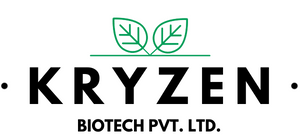Setting up a hydroponic farm requires careful planning and design to ensure optimal productivity and efficiency. In this chapter, we will delve into the key considerations for designing and setting up your hydroponic farm.
- Farm Layout: We will discuss the importance of an organized layout that maximizes space utilization and facilitates smooth workflow. Factors such as crop spacing, aisle width, and equipment placement will be covered, ensuring that your farm is designed for ease of operation and maintenance.
- Infrastructure Requirements: From greenhouses to grow tents, we will explore the various structures commonly used in hydroponic farming. You will learn about the essential features to consider, such as ventilation, lighting, and climate control systems, to create an optimal growing environment for your crops.
- Water Management: Efficient water management is crucial in hydroponics. We will discuss the different methods of water supply, such as recirculating and non-recirculating systems, and how to ensure proper filtration and sterilization. Additionally, we will address strategies for water conservation and the importance of monitoring pH and nutrient levels.
- Nutrient Delivery Systems: Proper nutrient delivery is essential for plant growth and development. In this section, we will explore different delivery systems, including drip irrigation, ebb and flow, and nutrient film technique. We will discuss the advantages and considerations of each method, enabling you to make informed decisions for your farm.
- Automation and Control Systems: Technology plays a significant role in modern hydroponic farming. We will introduce you to automation and control systems that can streamline your operations and enhance crop management. Topics covered will include environmental sensors, irrigation timers, and nutrient dosing controllers.
- Workflows and Standard Operating Procedures: Establishing efficient workflows and standard operating procedures (SOPs) is crucial for maintaining consistency and quality in your hydroponic farm. We will guide you in developing SOPs for tasks such as planting, harvesting, pest management, and nutrient solution management. By implementing well-defined procedures, you can ensure smooth operations and minimize errors.
- Safety and Regulatory Compliance: As with any agricultural venture, ensuring safety and complying with regulations is paramount. We will discuss best practices for maintaining a safe working environment, handling chemicals responsibly, and adhering to local regulations and certifications.
By the end of this chapter, you will have a comprehensive understanding of the key factors to consider when designing and setting up your hydroponic farm. With proper planning and attention to detail, you can create an efficient and productive farm that maximizes your yield and profitability.

